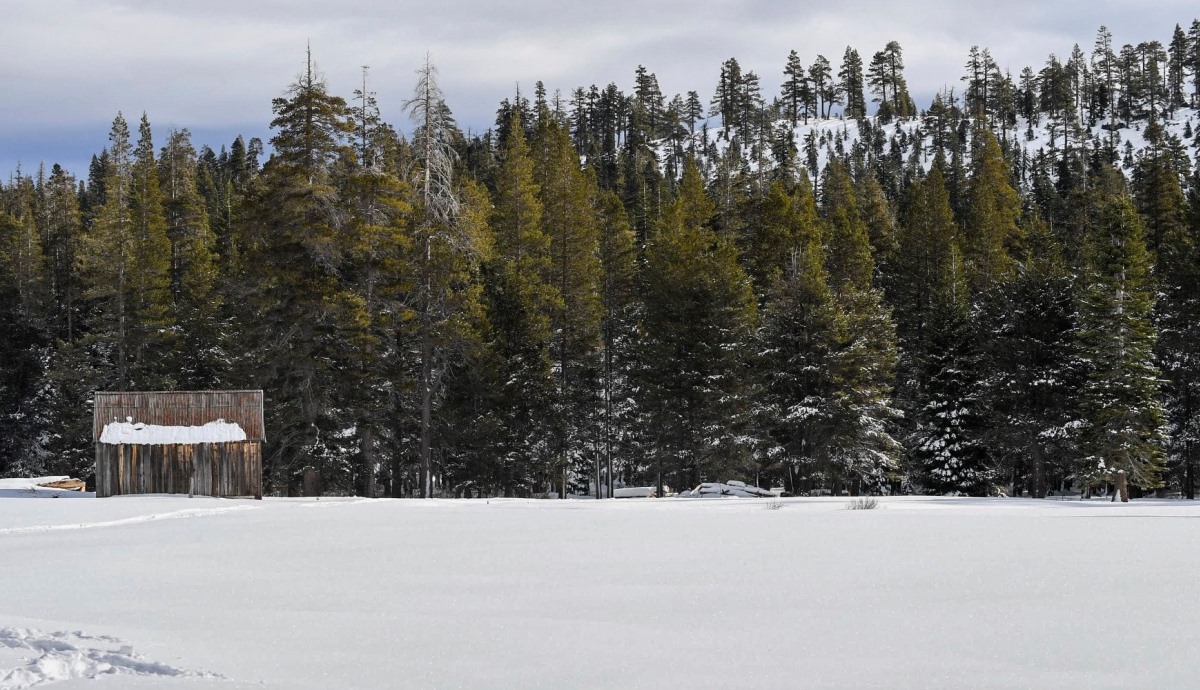Statewide, snowpack is just 52% of average for this date
From the Department of Water Resources:
 The Department of Water Resources (DWR) today conducted the first Phillips Station snow survey of the season. The manual survey recorded 30.5 inches of snow depth and a snow water equivalent of 10.5 inches, which is 93 percent of the January 1 average for this location. The snow water equivalent measures the amount of water contained in the snowpack and is a key component of DWR’s water supply forecast. While conditions were positive at Phillips Station, statewide the snowpack is just 52% of average for this date.
The Department of Water Resources (DWR) today conducted the first Phillips Station snow survey of the season. The manual survey recorded 30.5 inches of snow depth and a snow water equivalent of 10.5 inches, which is 93 percent of the January 1 average for this location. The snow water equivalent measures the amount of water contained in the snowpack and is a key component of DWR’s water supply forecast. While conditions were positive at Phillips Station, statewide the snowpack is just 52% of average for this date.“The snow survey results reflect California’s dry start to the water year and provide an important reminder that our state’s variable weather conditions are made more extreme by climate change,” said DWR Director Karla Nemeth. “We still have several months left to bring us up to average, but we should prepare now for extended dry conditions. The Department, along with other state agencies and local water districts, is prepared to support communities should conditions remain dry.”
On average, the Sierra snowpack supplies about 30 percent of California’s water needs and the snowpack is an important factor in determining how DWR manages the state’s water resources. Its natural ability to store water is why the Sierra snowpack is often referred to as California’s “frozen reservoir.” As spring sets in, the snowpack begins to melt. Water that’s not absorbed into the ground, called “runoff,” trickles into mountain streams, which feed rivers and eventually aqueducts and reservoirs, where it can be stored for use throughout the dry season. Climate change is affecting California’s snowpack, however, as more precipitation falls as rain and less as snow.
More telling than a survey at a single location are DWR’s electronic readings from 130 stations placed throughout the State. Measurements indicate that statewide, the snowpack’s SWE is 5 inches, or 52percent of the December 30 average.
“Today’s survey brought a first glimpse of how the state’s snowpack is shaping up, but there is a lot of winter still ahead,” said Sean de Guzman, chief of DWR’s Snow Surveys and Water Supply Forecasting Section. “While the dry conditions during late summer and fall have led to a below average snowpack, it is still encouraging to have the amount of snow we already have with two of the three typically wettest months still to come.”
DWR conducts five media-oriented snow surveys at Phillips Station each winter near the first of each month, January through April and, if necessary, May.



